My interest in mid 20th century efforts to automate photography led to the purchase of a Fujica 35-SE. When I bought my first dSLR, a Fuji S2 Pro, Fuji were better known for their films but it was an excellent camera though controversial. It was their second dSLR, based on a Nikon body, with their own sensor and related electronics. The sensor provoked a lot of debate, using a different arrangement of pixels and by applying software interpolation produced a 12 Mp file from a nominally 6 Mp sensor. The 35-SE is a less well known camera from the same stable and has some unusual features also but are they as innovative?
Introduced in 1959, it is fairly conventional in design, but with several unusual features, mostly related to the ergonomics of the body and controls and the resulting engineering considerations.
It is the usual oblong box with a lens/shutter on the front, a viewfinder at one end, an exposure meter in the top housing and an opening back to allow a cassette to be loaded and the film transported across the gate left to right as usual. It is in the design and placement of several controls where it strays from the usual path.
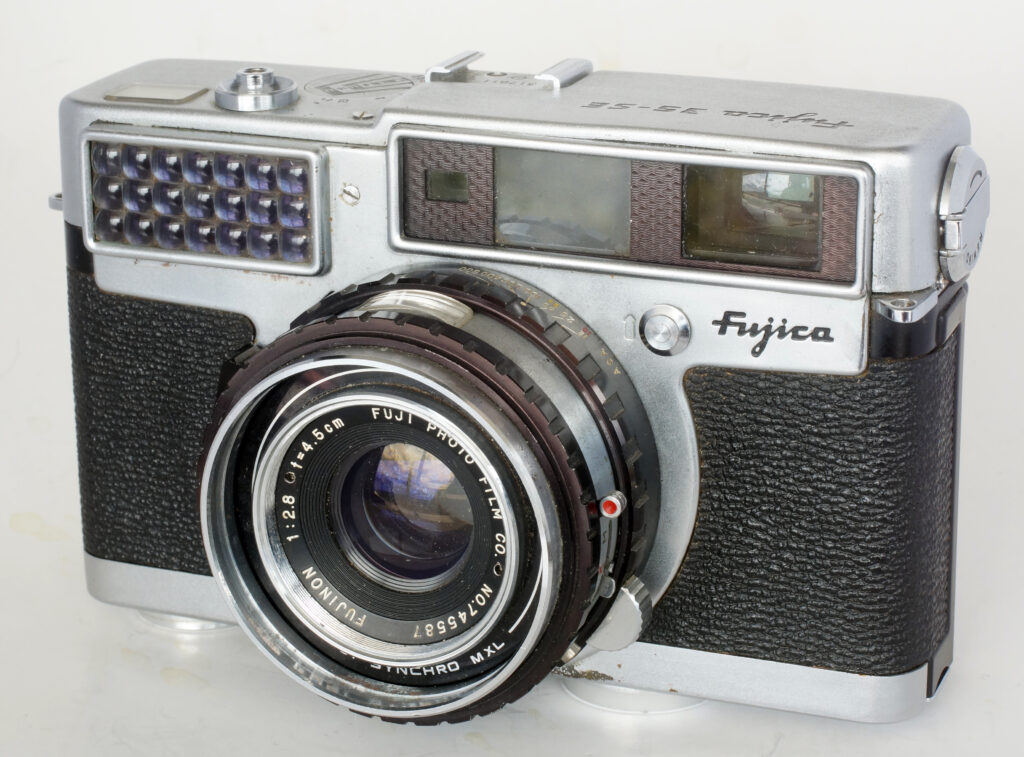
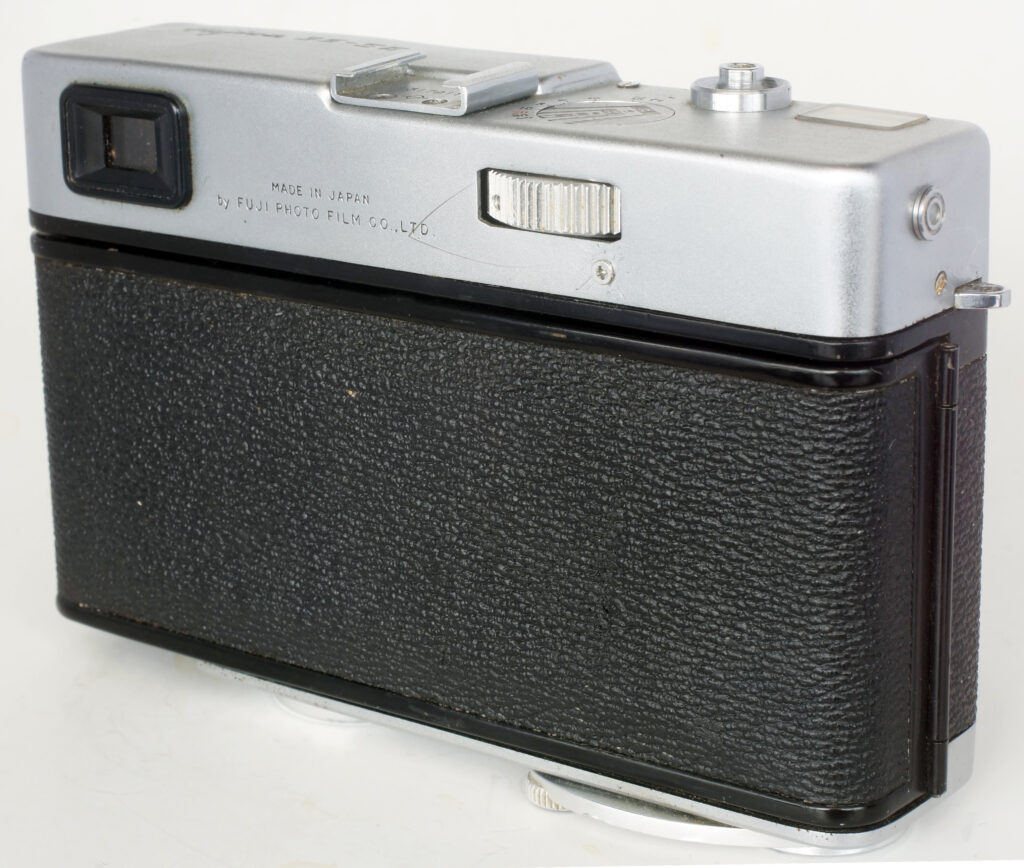
For exposure control shutter speed priority auto, so common at this time, is employed. Until CdS meters and electronic shutters became common it was normally based on shutter priority. The appropriate shutter speed for the subject is selected and then the aperture adjusted to centre the meter needle for the prevailing light level. The aperture is permanently linked with the shutter setting and is adjusted in tandem to maintain correct exposure. Basically, a partial light value system without the numbers.
A manual option is available with the Fujica 35-SE if required, the interlock disengaged with a small sliding button below the finder. It all works in the same way as the Prontor SLK-V fitted to the Vitomatic IIa from 1960 that I once owned.
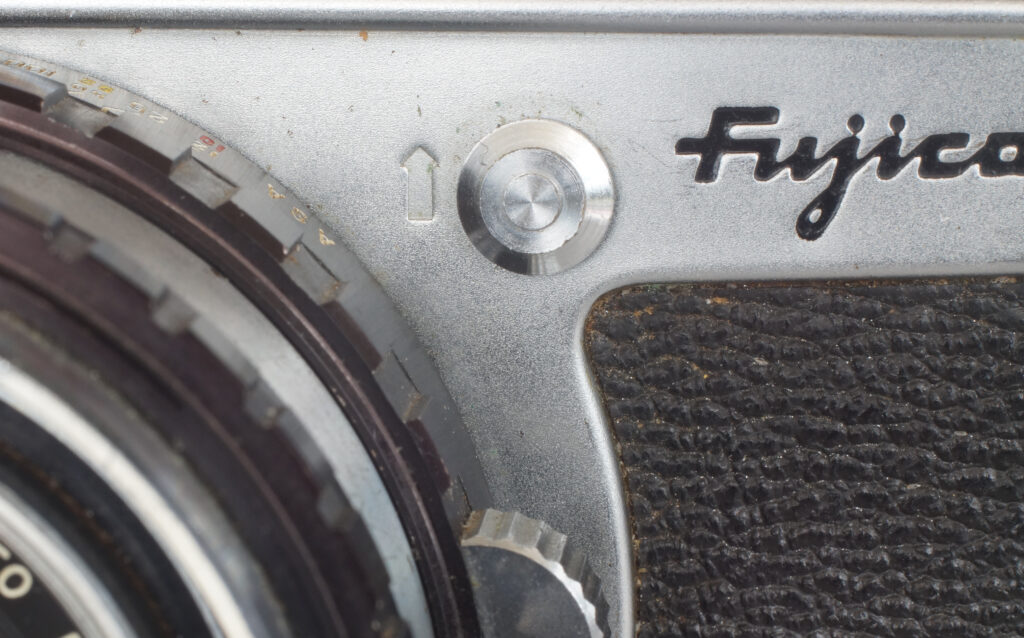
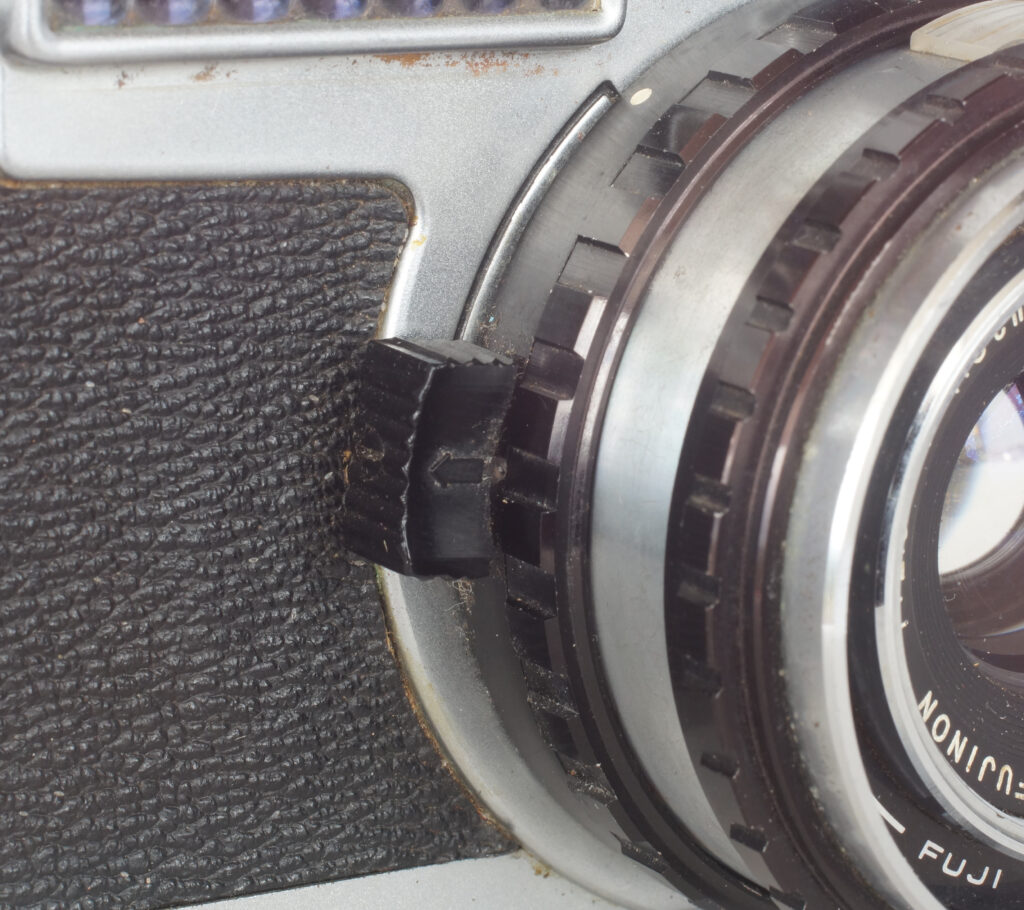
The leaf shutter is speeded 1-1/500 sec and B, marked as of Fuji manufacture, and with a (working) delayed action and flash sync. Speeds are adjusted with the front ring and are click-stopped.
Apertures are set with the rearward ring which also sets the film speed when the black tab is pulled outwards.
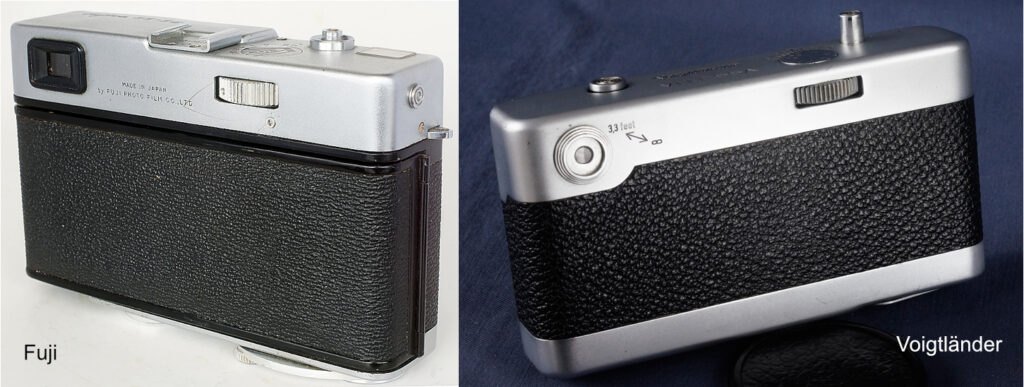
A coupled rangefinder is incorporated into the finder, with automatic parallax correction and is of a size to help spectacle wearers. The projected frame with automatic parallax correction is created with a central window and a second mirror like the M-Leicas and not reflected off the eyepiece, Albada style. This second mirror has a rectangular opening at its centre to allow the secondary rangefinder image to pass to the finder.
A departure from the usual arrangement is the placement of the focus adjustment, a knurled wheel that falls naturally under the right thumb and is partially buried in the top housing with a scale immediately above it. This means focus can be adjusted and the shutter released whilst holding the camera in both hands for much better control over camera steadiness.
The Voigtländer Vitessa A from 1950 had the same arrangement and was a camera that took handling to yet another level to match its name. It could be picked up and held in both hands in firing position before being opened, focussed, fired, wound and fired again without changing grip in the slightest, only the exposure settings required taking a hand away from the camera and had to be pre-set.
Both cameras anticipated the very common use of thumb operated control wheels used later in SLRs and in today’s cameras.

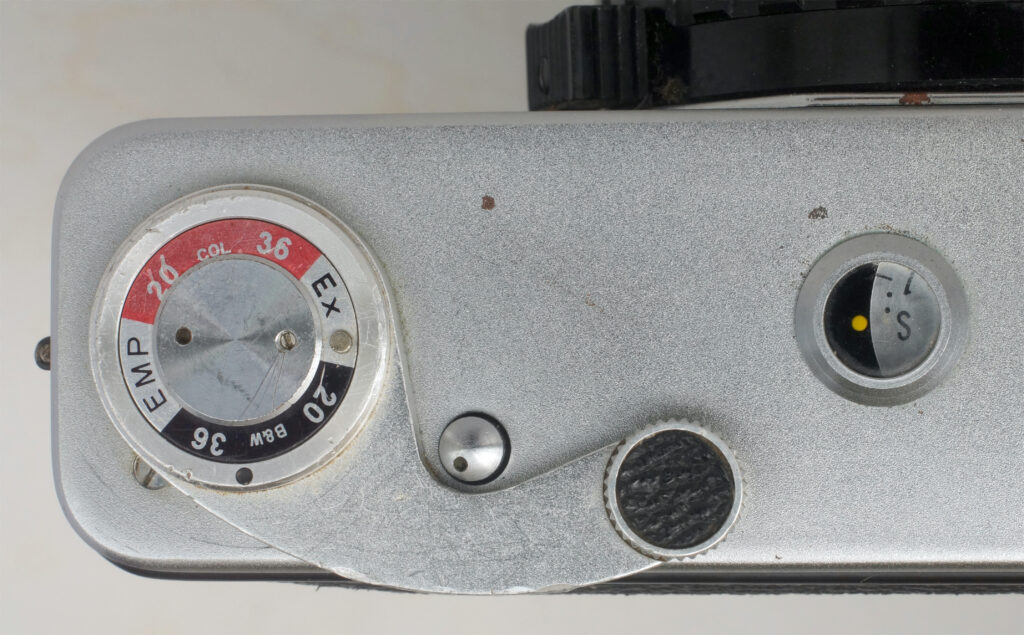
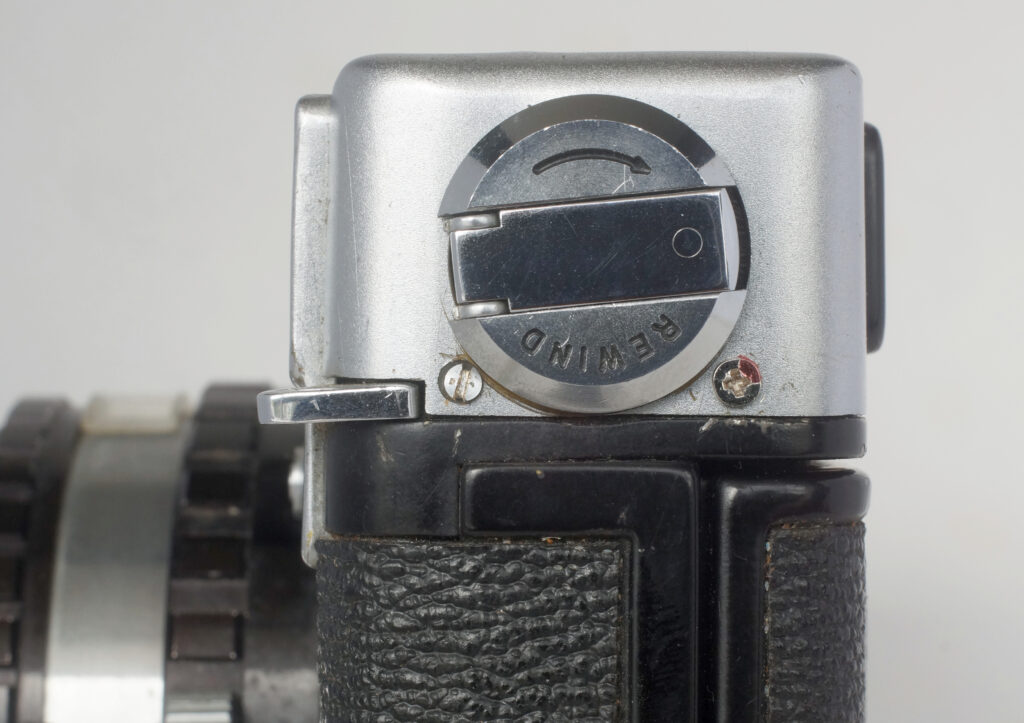
The other oddball features are the wind/rewind functions. The lever wind is located on the base and is remarkably similar to the Retina’s lever. It was moved there no doubt to make room for the focus mechanism and, possibly, the meter in the top housing. The rewind is a folding crank mounted vertically on the end of the top housing, driving through 90º gearing, where Leica later sited the 45º angled M4 rewind in 1967.
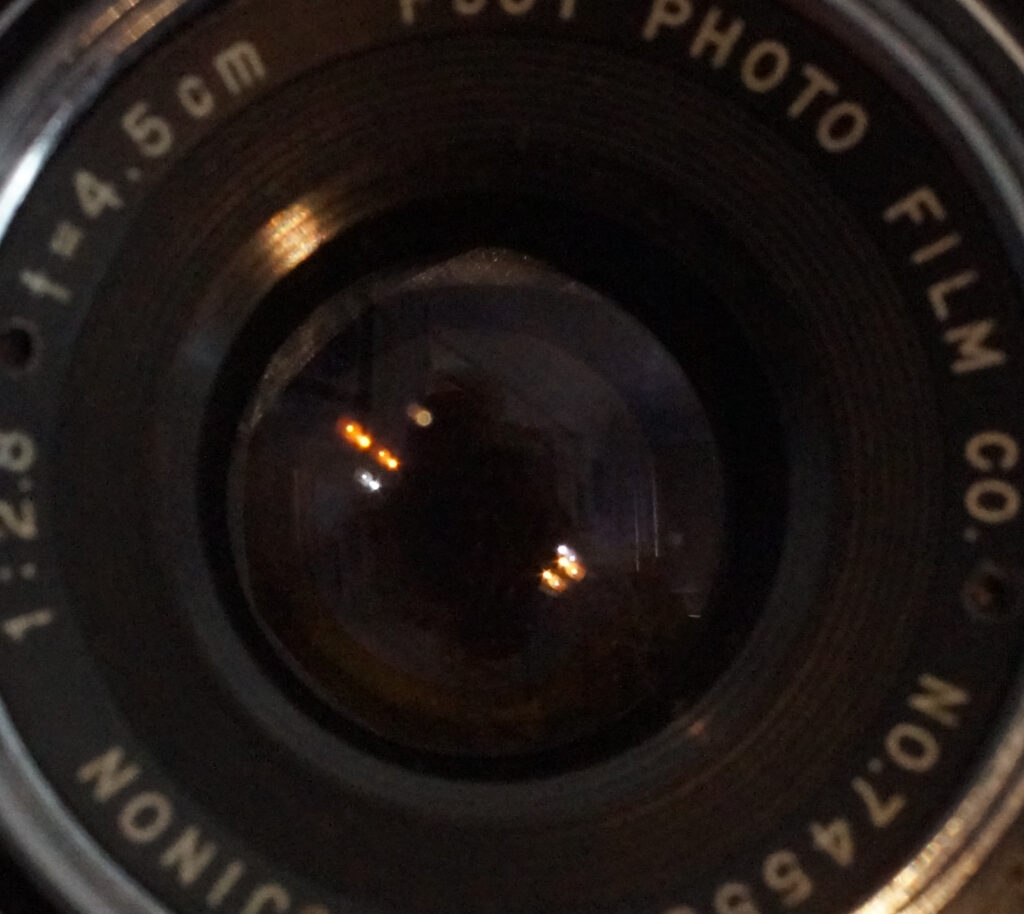
There were two lens options for the Fujica 35-SE, the 45mm f2.8 as here and an f/1.9. I can certainly count 12 clear reflections in this lens plus a further less distinct one, so presumably 5, maybe 6 components, and with different coating colours. The f2.8 lens on my Retina IIc is a 6-element and the same design as the f2 on the IIIc but “throttled back” to f2.8
High quality with quite advanced coatings, clean and free from any but small blemishes.
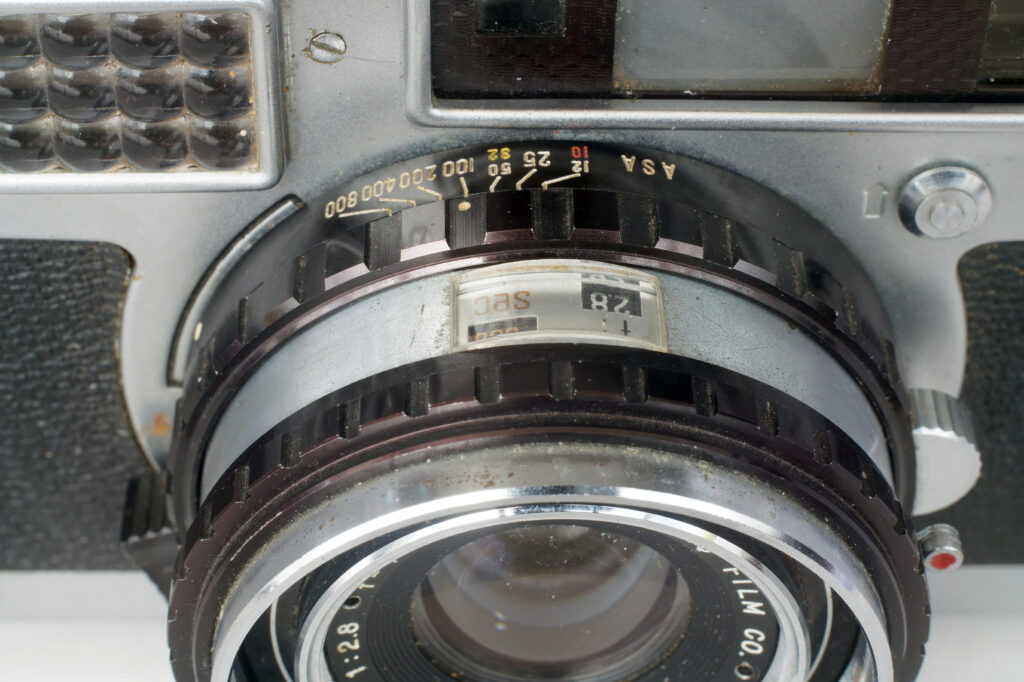
The smooth focussing arrangement uses helical focus with the shutter and aperture all mounted within the lens tube and moving with it. This contrasts with Voigtländer’s solution to accomodate helical focus with the Vito ranges using Prontor shutters where the shutter was placed behind the lens and fixed in the body.
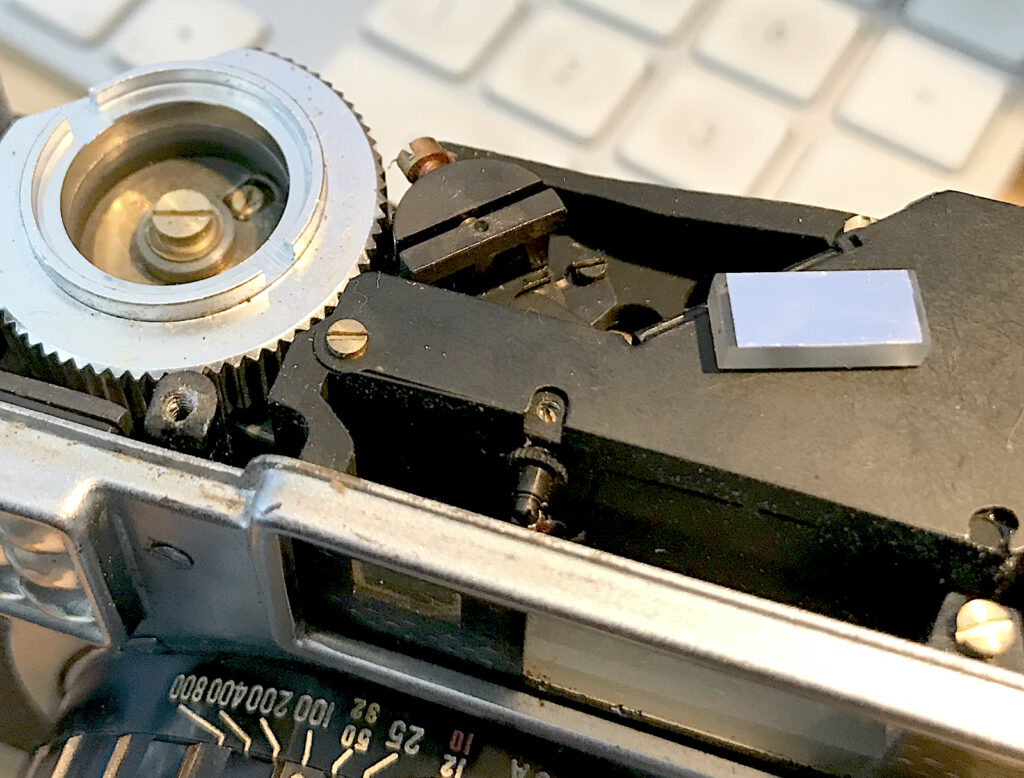
Unfortunately, this example of the Fujica 35-SE was not in good condition. The warning bells should have rung out when the description basically just said “the shutter works” and so many screws were clearly missing from the photos, but it is an interesting design and wasn’t going for huge money.
Yes, the shutter worked, but the rangefinder lacked a second image, the meter was very weak in response, not unusual, and the tripod mount was loose. I hoped that the rangefinder was only suffering a displaced angled mirror which turned out to be partly the case, the mirror was lying loose. I managed to re-secure it but failed to adjust it to work consistently so a further attempt might be more successful if I am feeling stronger.
The rangefinder is not the easiest to see, either, the central patch being quite small compared to many, and the frame and patch are gold tinted which doesn’t make them stand out very strongly. Agfa used a vivid green for example which is much easier to see. The mounting of the projected frame is adrift somehow in a way that makes it wobble when the camera is moved, with a definite lean when tilted upwards. This can be rather off-putting and makes framing accuracy somewhat hit and miss.
Finally, the meter was not a big issue other than it prevented use of the automatic features. Many of my cameras are ‘challenged’ in some way but as long as the lens is good and the shutter and iris work, they are still capable of producing good images, this one included.
In use.
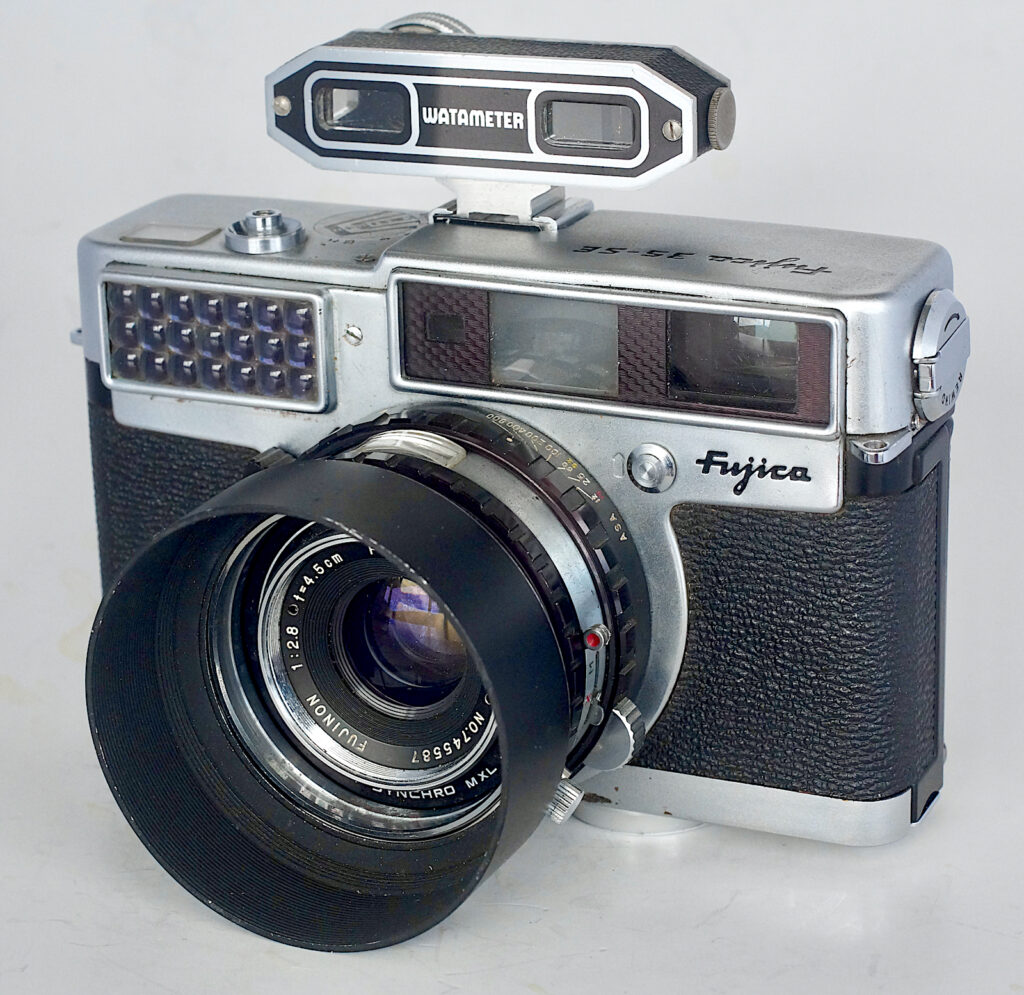
To try it out I loaded some Adox CMS 20 II and chose a cloudy bright day to try to limit the strong contrast this film can produce. No filters were used. Processing was in Rodinal 1:200 for 14 minutes.
My usual subjects show this lens to be well up there with the best I have used before. The finder looseness is the only problem and, even though I used the rangefinder for a few frames, its inaccuracy combined with the finder problems produced some wonky shots. I have shown the examples here full frame to show the problems. Like the little girl who had a little curl right in the middle of her forehead, some are very very good. but some are, not horrid, but definitely not how they were framed and focussed.
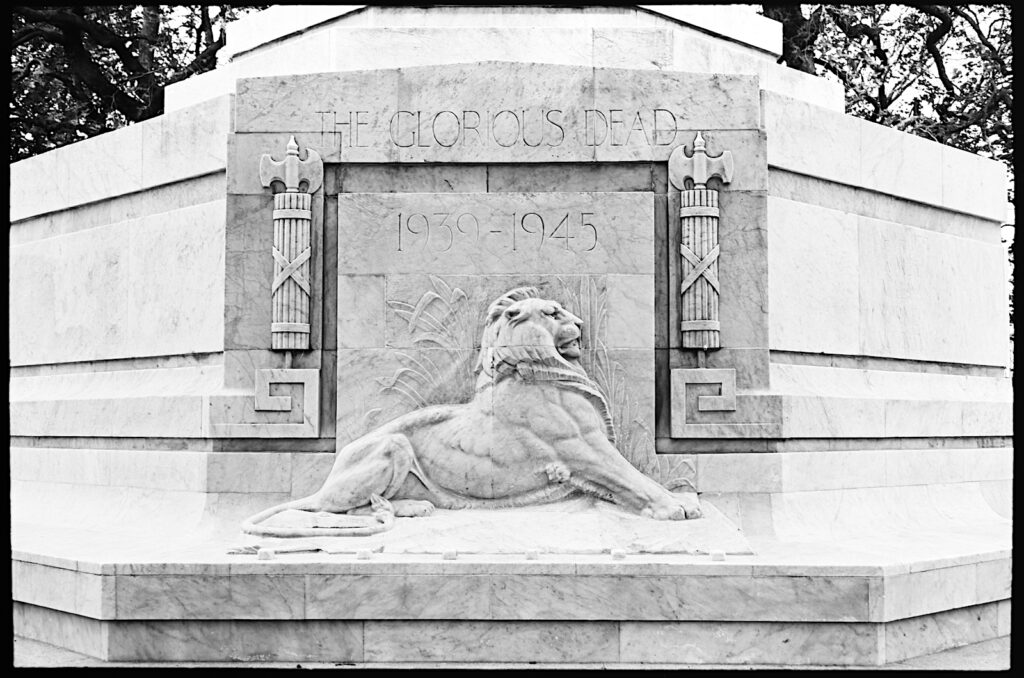
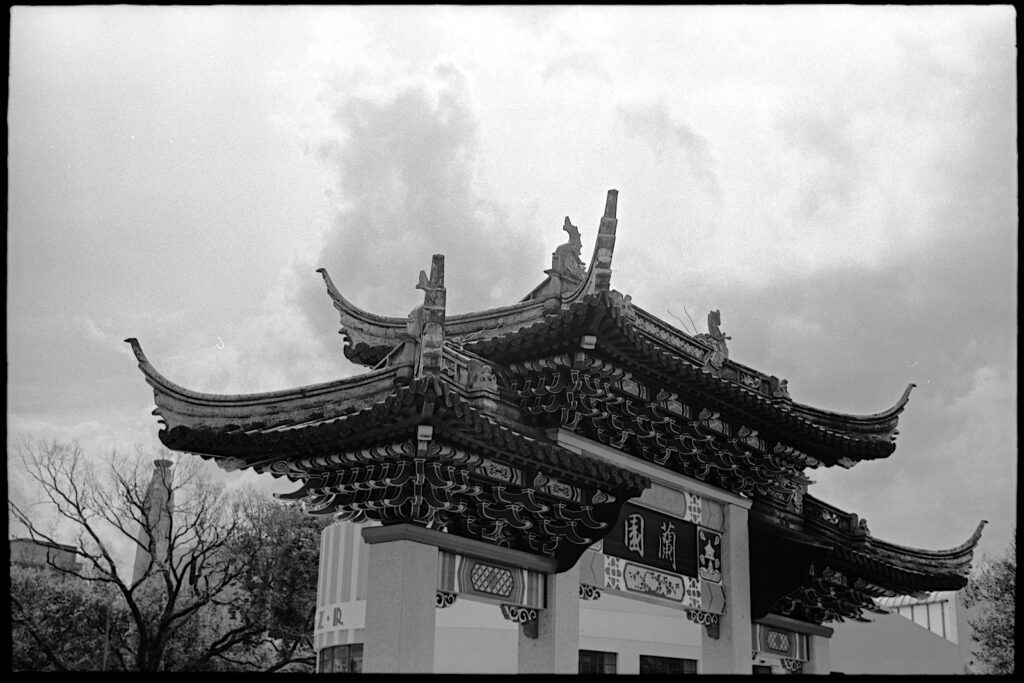
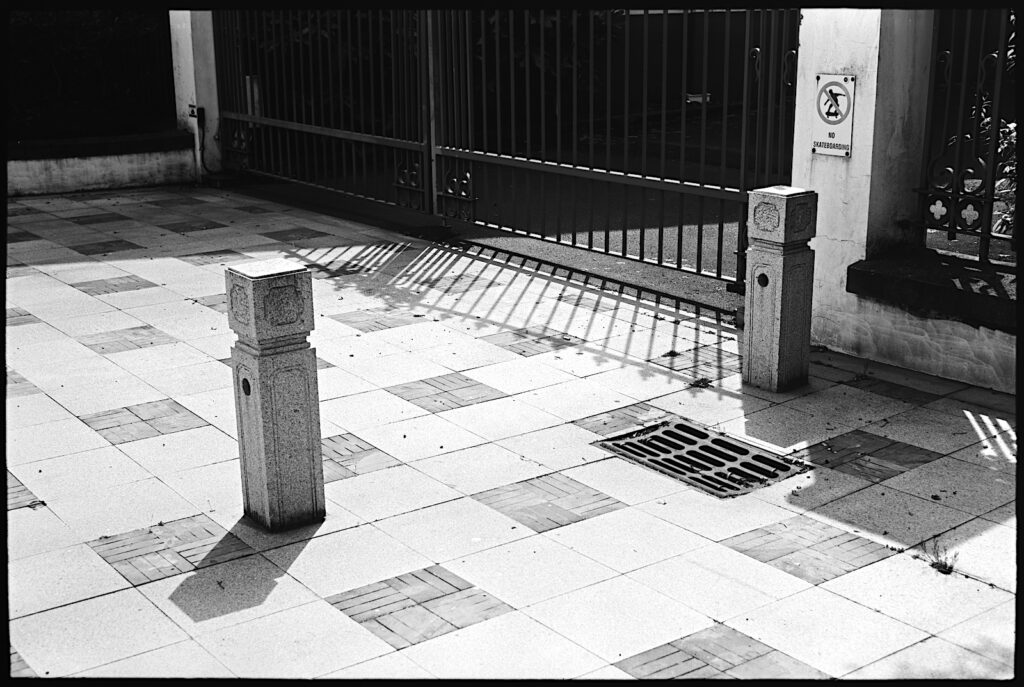
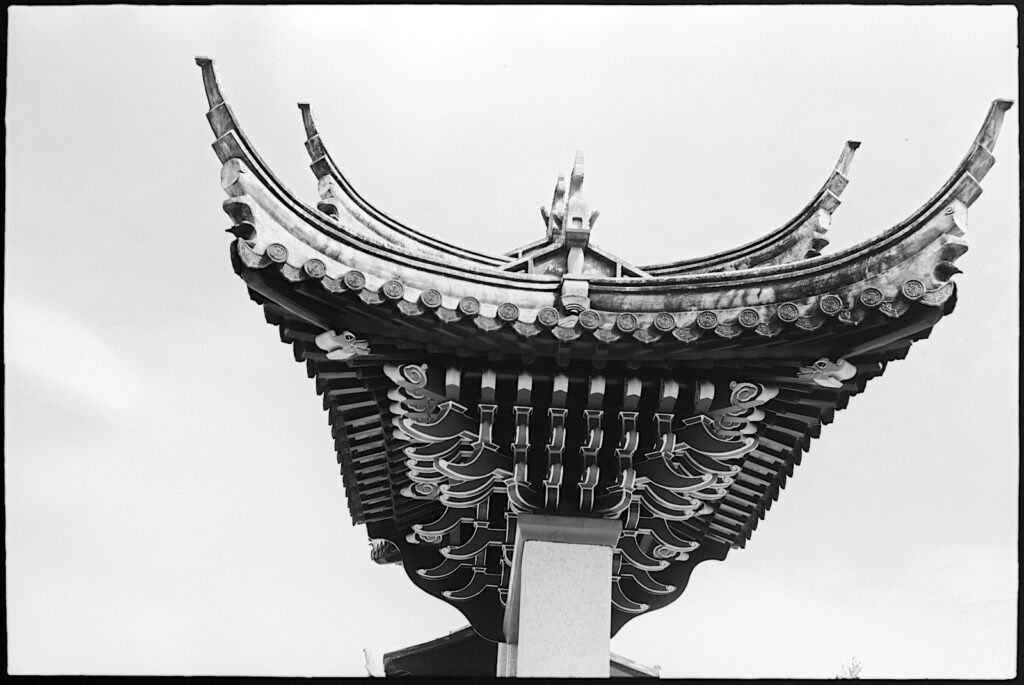
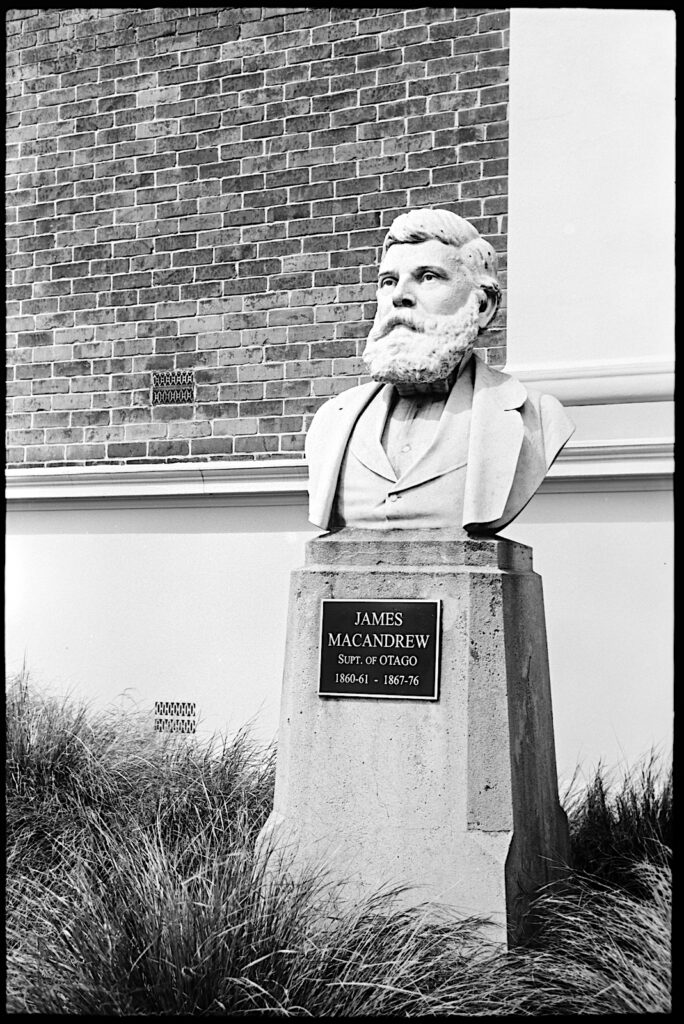
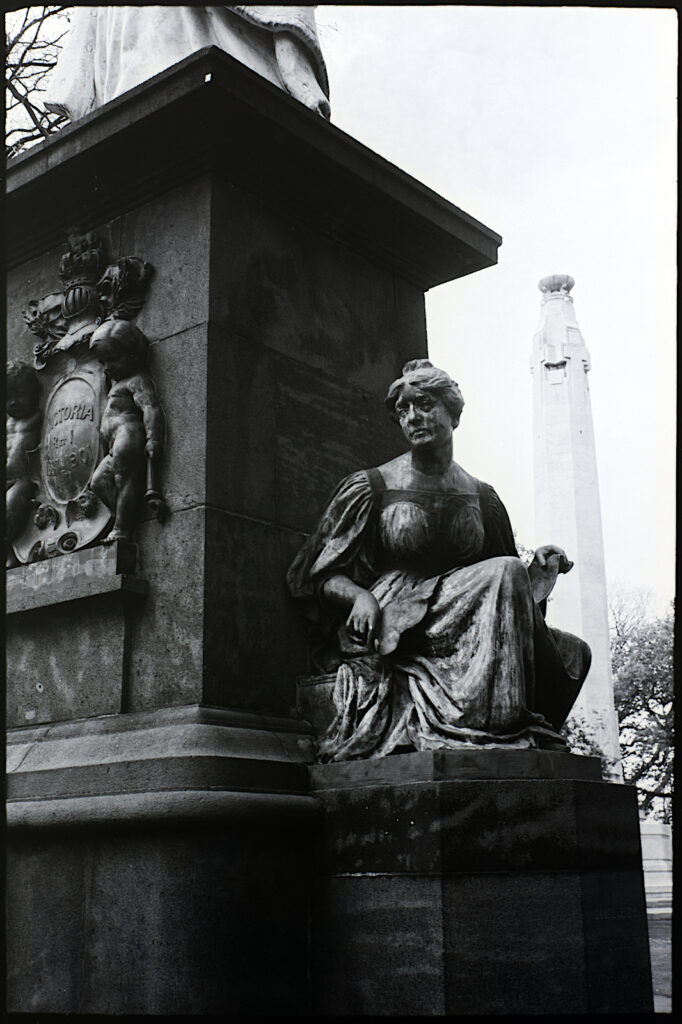
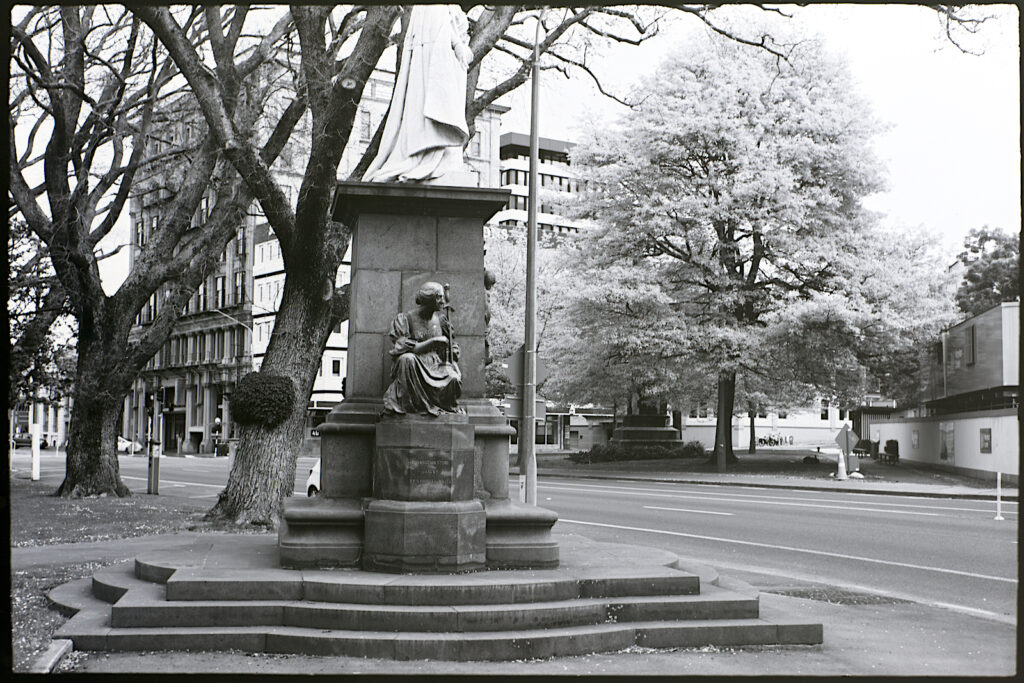
Final comments
I was rather disappointed that there were so many things lacking when this Fujica 35-SE arrived but it still proved to be a workable manual v/f camera nevertheless.
This camera has a good lens and working shutter and probably deserves an attempt at restoration but it isn’t worth the cost of a professional job unfortunately. It is really bashed about in general and could never be more than a user. So I may take it apart to see if I can repair it or just extract the lens unit for adapting to use on my digital, which was the original plan.
As to whether it is an innovative design, I have to say not really. It has found its own solutions in some areas but basically it is a camera that makes the most of the technology available in the late 1950s, incorporating proven features that complement its design objectives. Like many other manufacturers products, sightly derivative but basically a very practical and well designed combination of features.
Share this post:
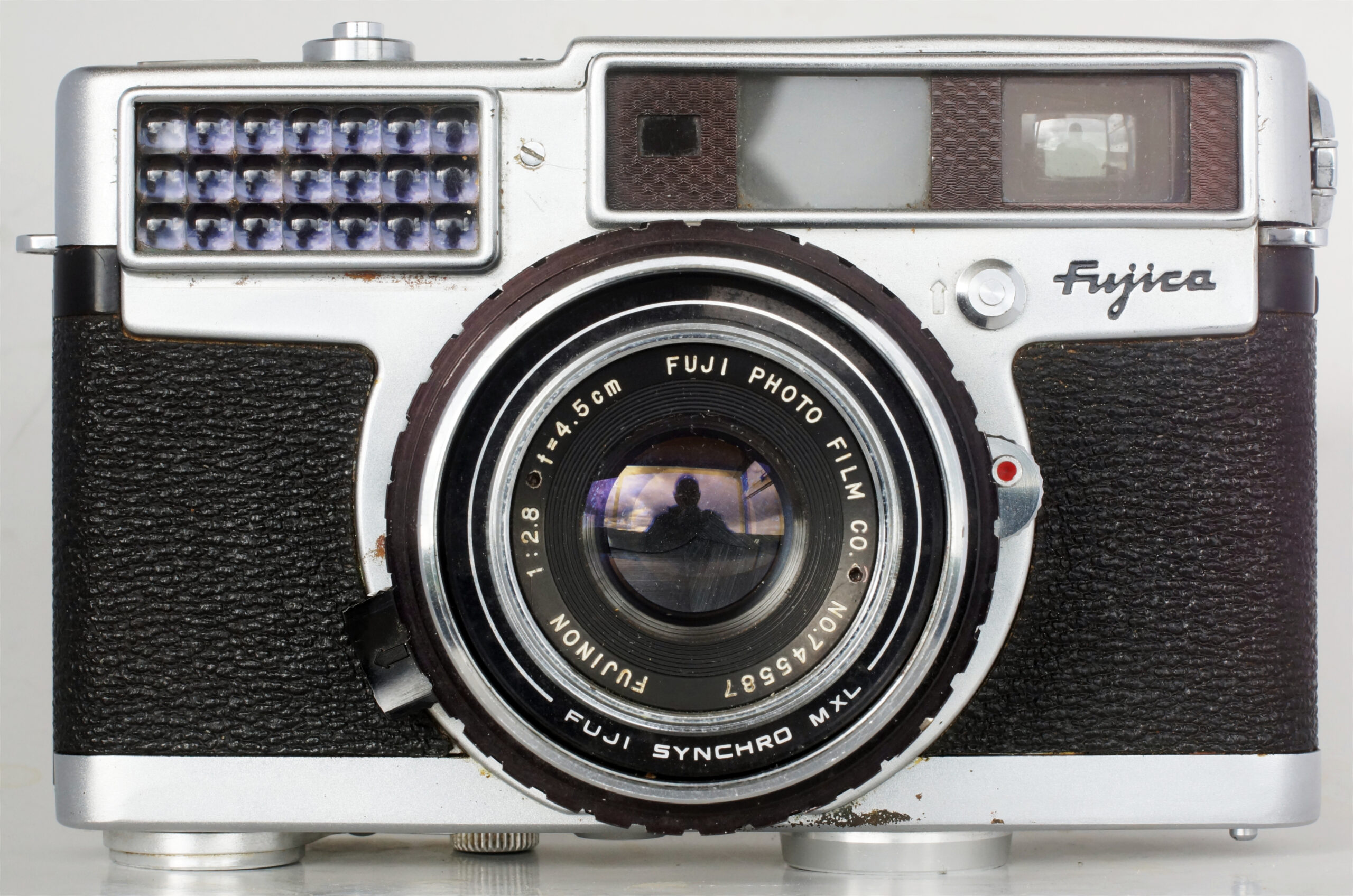
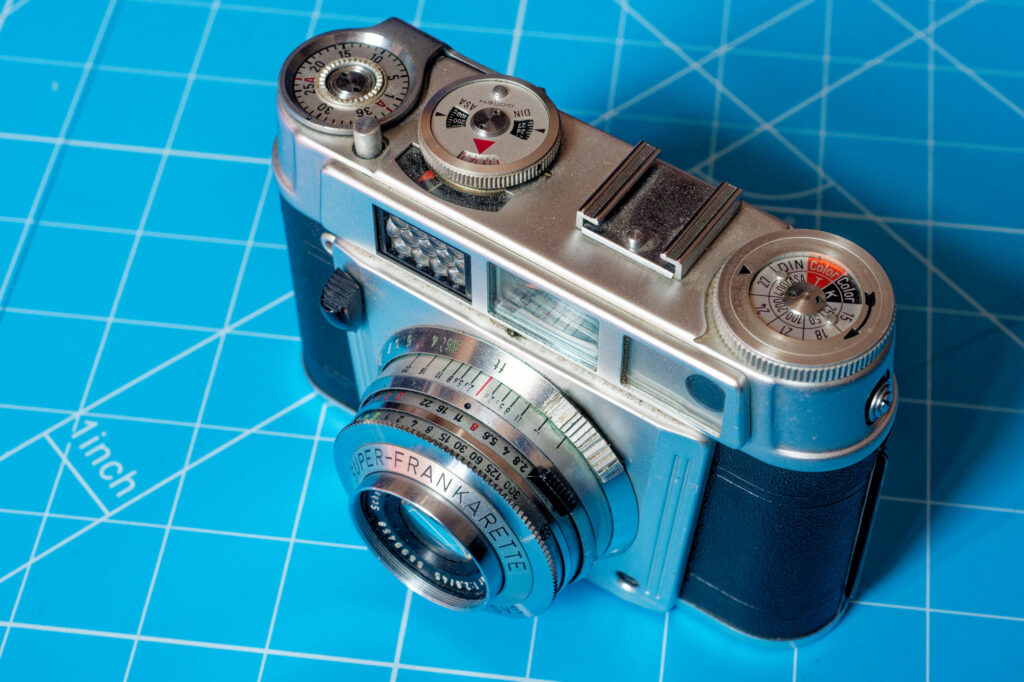
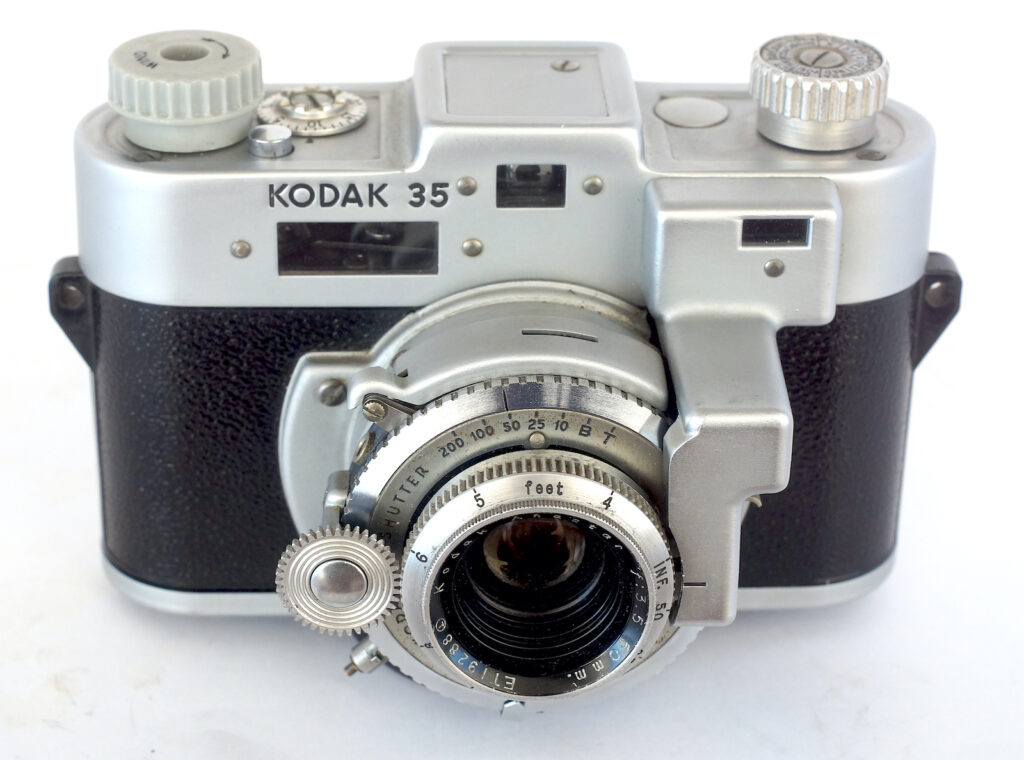
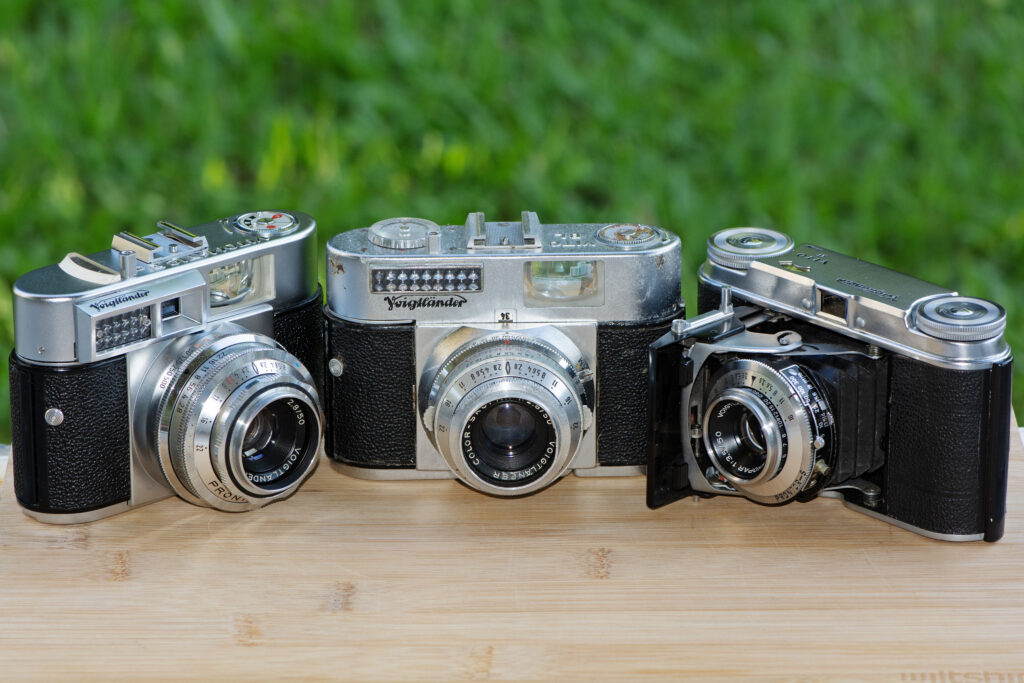
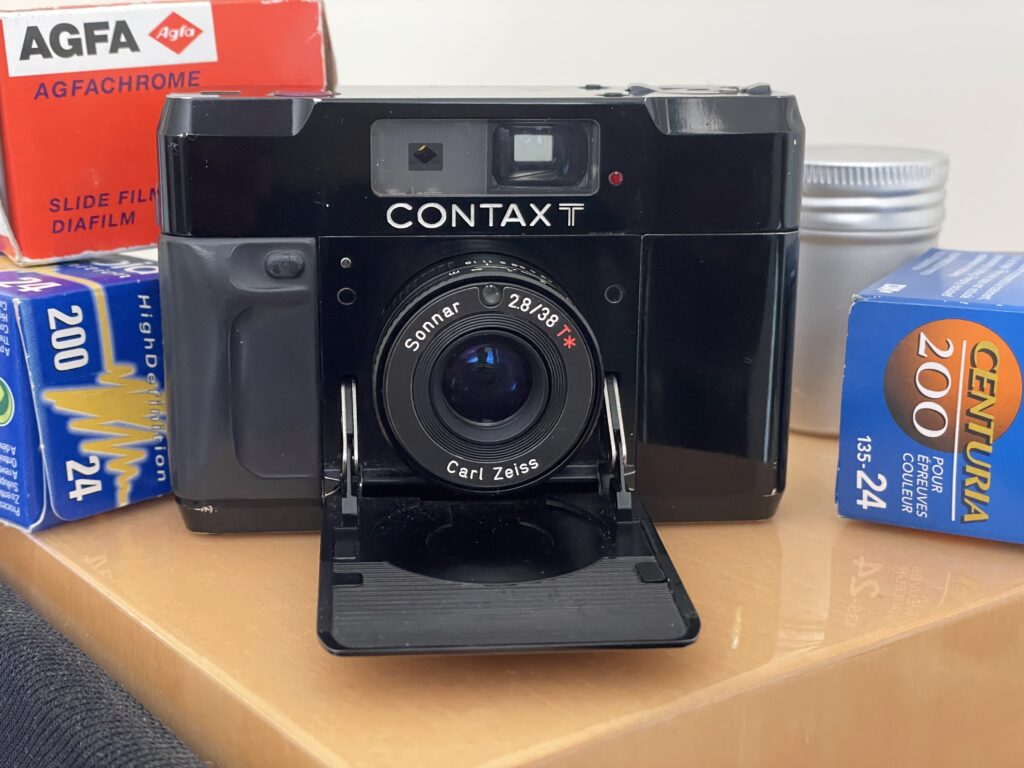




Comments
Ibraar Hussain on Fujica 35-SE – A review of an interesting if tatty camera
Comment posted: 04/12/2024
Very nice camera and as usual really like your B&W work!
Comment posted: 04/12/2024
Simon Foale on Fujica 35-SE – A review of an interesting if tatty camera
Comment posted: 04/12/2024
Comment posted: 04/12/2024
Jeff T. on Fujica 35-SE – A review of an interesting if tatty camera
Comment posted: 04/12/2024
Comment posted: 04/12/2024
Louis Sousa on Fujica 35-SE – A review of an interesting if tatty camera
Comment posted: 04/12/2024
Comment posted: 04/12/2024
Comment posted: 04/12/2024
Geoff Chaplin on Fujica 35-SE – A review of an interesting if tatty camera
Comment posted: 04/12/2024
Comment posted: 04/12/2024
Paul Quellin on Fujica 35-SE – A review of an interesting if tatty camera
Comment posted: 04/12/2024
Comment posted: 04/12/2024
Zheng Li on Fujica 35-SE – A review of an interesting if tatty camera
Comment posted: 05/12/2024
Comment posted: 05/12/2024
Jeffery Luhn on Fujica 35-SE – A review of an interesting if tatty camera
Comment posted: 05/12/2024
Thanks for another well-written post. Very good camera shots to clearly show the details, and of course your location shots are very good quality. Great composition and tonal scale.
I've always thought Fuji made good optics. They were among the first to achieve good multi-coating, which made their lenses nice and contrasty. Fujinon large format lenses are among my favorites.
Aside from mirror misalignment, how did your image sharpness compare to other cameras from the 1950's?
Jeffery
Comment posted: 05/12/2024